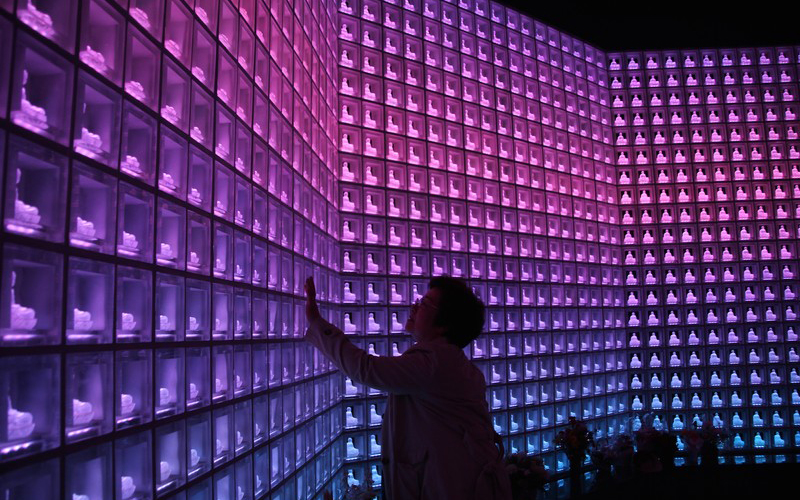The future cemetery
This research investigates the potential of new and innovative technologies to be incorporated into Australian cemeteries and memorial spaces.

Overview
The contemporary Western cemetery, dedicated to the dead and their memorials, has become more than a pervasive urban landmark. It is also a central site in the emotional lives and cultural histories of local communities. However, this model is now facing crisis, driven by growing environmental concerns, maintenance costs, and an increasingly well-informed public with a complex range of desires for memorialisation.
Around the world, many cemeteries have begun adopting new technologies to improve their visitors’ experiences, reduce their facilities’ environmental footprint, and extend the personalisation of services in response to more diverse community desires. These include the potential for grave location, navigation, and tours, and for digital annotation or augmentation of interment locations.
New alternatives to traditional cremation, burial, and mausoleums have also become viable, including resomation (water-based cremation) and natural burial. This project will identify and critically assess the potential of innovative technologies to enhance the public’s experience of the cemetery, diversify service offerings, and strengthen community connections, all in the context of increasingly diverse and rapidly changing social circumstances.
The DeathTech Research Team is a group of anthropologists, social scientists, and human-computer interaction specialists based at the University of Melbourne working to understand the intersection of death, technology, and society in the 21st century.
Impact
This project aims to:
- identify and critically assess the potential of innovative technologies to enhance the experience of the cemetery for an increasingly diverse, secular, and well-informed public
- strengthen cemeteries’ community connections
- generate knowledge about the industry’s and the public’s future-oriented desires
- assess emerging cemetery-based technologies including mobile apps, GPS systems, drones, holography, virtual reality, green burials, and resomation.
Outcomes
A key expected outcome is a future cemetery that makes sensitive use of technology to enhance its services to public and community, underpinned by scholarly research.
Learn more by reading our publications.
Project details
Sponsors
Australian Research Council – Linkage Grant LP180100757; commencement 2019 (active)
Research partners
Greater Metropolitan Cemeteries Trust (GMCT)
Project team
Chief investigators
Profesor Michael Arnold (School of Historical and Philosophical Studies)
Professor Tamara Kohn (School of Social and Political Sciences)
Professor Martin Gibbs (School of Computing and Information Systems)
Dr Bjorn Nansen (School of Culture and Communication)
Principal investigators
Associate Professor Elizabeth Hallam (Oxford University)
Deb Ganderton (GMCT)
Research Fellow
Dr Fraser Allison (School of Computing and Information Systems)
Dr Hannah Gould (School of Social and Political Sciences)